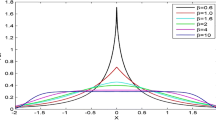Abstract
This paper presents a region merging-based automatic tongue segmentation method. First, gradient vector flow is modified as a scalar diffusion equation to diffuse the tongue image while preserving the edge structures of tongue body. Then the diffused tongue image is segmented into many small regions by using the watershed algorithm. Third, the maximal similarity-based region merging is used to extract the tongue body area under the control of tongue marker. Finally, the snake algorithm is used to refine the region merging result by setting the extracted tongue contour as the initial curve. The proposed method is qualitatively tested on 200 images by traditional Chinese medicine practitioners and quantitatively tested on 50 tongue images using the receiver operating characteristic analysis. Compared with the previous active contour model-based bi-elliptical deformable contour algorithm, the proposed method greatly enhances the segmentation performance, and it could reliably extract the tongue body from different types of tongue images.









Similar content being viewed by others
Explore related subjects
Discover the latest articles, news and stories from top researchers in related subjects.References
Maciocia G (1995) Tongue diagnosis in Chinese medicine. Washington
Kirschbaum B (2000) Altas of Chinese tongue diagnosis. Washington
Kass M, Witkin A, Terzopoulos D (1987) Snake: active contour models. Int J Comput Vis 1(4):321–331
Zhang K, Zhang L, Song H, Zhou W (2010) Active contours with selective local or global segmentation a new formulation and level set method. Image Vis Comput 28(4):668–676
Zhang K, Song H, Zhang L (2010) Active contours driven by local image fitting energy. Pattern Recognit 43(4):1199–1206
McInerney T, Terzopoulos D (1996) Deformable models in medical image analysis: a survey. Med Image Anal 1(2):91–108
He L, Peng Z, Everding B et al (2008) A comparative study of deformable contour methods on medical image segmentation. Image Vis Comput 26(2):141–163
Felzenszwalb P, Huttenlocher D (2004) Efficient graph-based image segmentation. Int J Comput Vis 59(2):167–181
Peng B, Zhang L, Yang J (2009) Iterated graph cuts for image segmentation. Asian Conf Comput Vis 5995:677–686
Zhang J, Wang Y, Shi X (2009) An improved graph cut segmentation method for cervical lymph nodes on sonograms and its relationship with node’s shape assessment. Comput Med Imaging Graph 33(8):602–607
Chen J, Shapiro L (2008) Medical image segmentation via min s-t cuts with side constraints. Comput Med Imaging Graph. In: International conference on pattern recognition, USA, pp 1–4
Vincent L, Soille P (1991) Watersheds in digital spaces: an efficient algorithm based on immersion simulations. IEEE Trans Pattern Anal Mach Intell 13(6):583–598
Zhang L, Paul B (2002) Edge detection by scale multiplication in wavelet domain. Pattern Recognit Lett 23(14):1771–1784
Paul B, Zhang L, Wu X (2005) Canny edge detection enhancement by scale multiplication. IEEE Trans Pattern Anal Mach Intell 27(9):1485–1490
Pang B, Zhang D, Wang K (2005) The bi-elliptical deformable contour and its application to automated tongue segmentation in Chinese medicine. IEEE Trans Med Imaging 24(8):946–956
Ning J, Zhang L, Zhang D, Wu C (2010) Interactive image segmentation by maximal similarity based region merging. Pattern Recognit 43(2):445–456
Xu C, Prince JL (1998) Snakes, shapes, and gradient vector flow. IEEE Trans Image Process 7(3):359–363
Weickert J (2001) Efficient image segmentation using partial differential equations and morphology. Pattern Recognit 34(9):1813–1824
Sergio EH, Kenneth EB, Yu Y (2005) Region merging using homogeneity and edge integrity for watershed-based image segmentation. Opt Eng 44:017004
Ojala T, Pietikäinen M, Topi Mäenpää (2002) Multiresolution gray-scale and rotation invariant texture classification with local binary patterns. IEEE Trans Pattern Anal Mach Intell 24(7):971–987
Guo Z, Zhang L, Zhang D (to appear) A completed modeling of local binary pattern operator for texture classification. IEEE Trans Image Process
Guo Z, Zhang L, Zhang D (2010) Rotation invariant texture classification using LBP variance (LBPV) with global matching. Pattern Recognit 43(3):706–719
Metz C (1978) Basic principles of ROC analysis. Semin Nucl Med 8:283–298
Loizou C, Pattichis C, Pantziaris M, Nicolaides A (2007) An integrated system for the segmentation of atherosclerotic carotid plaque. IEEE Trans Inform Tech Biomed 11(5):661–667
Fleiss JL, Cohen J, Everitt BS (1969) Large sample standard errors of kappa and weighted kappa. Psychol Bull 72(5):323–327
Rosenfield GH, Fitzpatrick Lins K (1986) A coefficient of agreement as a measure of thematic classification accuracy. Photogramm Eng Remote Sens 52(2):223–227
Acknowledgments
Authors thank sincerely Bo Huang, Li Liu and Zhenhua Guo for the great help in this paper. This work is partially supported by the National Science Foundation of China (NSFC) Key Overseas Project under Grant No. 60620160097 and the National Science Foundation of China (NSFC) under Grant No. 61003151 and the Fundamental Research Funds for the Central Universities under Grant No. QN2009091 and Northwest A & F University Research Foundation under Grant No. Z111020902.
Author information
Authors and Affiliations
Corresponding author
Rights and permissions
About this article
Cite this article
Ning, J., Zhang, D., Wu, C. et al. Automatic tongue image segmentation based on gradient vector flow and region merging. Neural Comput & Applic 21, 1819–1826 (2012). https://doi.org/10.1007/s00521-010-0484-3
Received:
Accepted:
Published:
Issue Date:
DOI: https://doi.org/10.1007/s00521-010-0484-3




